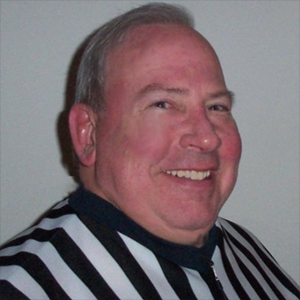
Rndballref
20 Years Experience
Chicago, IL
Male, 60
For twenty years I officiated high school, AAU and park district basketball games, retiring recently. For a few officiating is the focus of their occupation, while for most working as an umpire or basketball referee is an avocation. I started ref'ing to earn beer money during college, but it became a great way to stay connected to the best sports game in the universe. As a spinoff, I wrote a sports-thriller novel loosely based on my referee experiences titled, Advantage Disadvantage
Technically slapping the arm of an opponent is a foul. Inpractice, a referee should use his judgement to determine if that action caused a turnover. If it did, the foul should be called.
In your question, you ask if A calls a foul which makes me believe that you are playing without an official. In pickup games, often rough play is tolerated and calling a slap on the arm is considered weak sometimes.
A kick is the intentional contact with the leg or foot. As you describe it sounds unintentional, and therefore not a kick.
Sounds like you are getting a late start but I would never discourage anyone from pursuing their dream. By the way, Michael Jordan was cut from his high school team and clearly he stuck to it.
Technically, you cannot ever slap an opponent's wrist or hand unless it is on the ball. But in practice, good referees would be focusing on the palyers' torsos because that is where a meaningful foul is most likely to happen.
Let's suppose that I saw the play with exact clarity. The player who slapped your hand "caused" the ball to go out of bounds, and unless the slap was forceful or flagarant, I would call the ball out (violation not foul) - last touched by your opponent and give your team the throw in.
Personal Stylist & Life Coach
 What makes someone qualified to life-coach someone else?
What makes someone qualified to life-coach someone else?
CBP Officer
 How cooperative are Mexican authorities re: US immigration and border control?
How cooperative are Mexican authorities re: US immigration and border control?
Dating Website Employee
 What are the most common mistakes guys make on out their profiles?
What are the most common mistakes guys make on out their profiles?
When a shot is in the air and time runs out the quarter ends when the try ends. So the instant the ball becomes lodged, the try is over and so is the quarter. The team with the possession arrow gets the ball to start the next quarter.
During normal play, when a player catches the ball in air he is considered to be in the court he alighted from. Suppose Team A has the ball in possession in A's frontcourt. Player A1 jumps from the backcourt, catches the ball in air and lands in the frontcourt. This is a backcourt violation.
HOWEVER, there are two exceptions: 1) if a defensive player jumps from his backcourt, catches the ball and lands in his frontcourt, and 2) on any throw in.
In your question, it is a throw in and so the exception applies. No backcourt violation.
NO, unless it is incidental or of no consequence. Normally body contact by a moving defender on a drive to the basket is called a foul.
-OR-
 Login with Facebook
Login with Facebook (max 20 characters - letters, numbers, and underscores only. Note that your username is private, and you have the option to choose an alias when asking questions or hosting a Q&A.)
(A valid e-mail address is required. Your e-mail will not be shared with anyone.)
(min 5 characters)
By checking this box, you acknowledge that you have read and agree to Jobstr.com’s Terms and Privacy Policy.
-OR-
 Register with Facebook
Register with Facebook(Don't worry: you'll be able to choose an alias when asking questions or hosting a Q&A.)